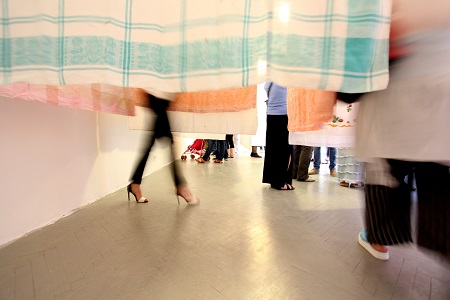Women in power: How do Georgia’s numbers compare with the European average?

What is the level of participation of women in the political and public life of Georgia and how do Georgia’s numbers compare to the Europe-wide average?
These questions are answered in the newest report from the Council of Europe that looks at progress made by 46 countries towards the goal set by the Council of Europe’s Committee of Ministers in 2003 of having at least 40% of both men and women taking part in different aspects of political and public life.
According to the report, this is what’s going on in Georgia with regard to gender (in)equality:
- 12% of women elected to lower house of parliament in 2016, compared to a Europe-wide average of 25.6%
- 6.7% of women presidents of parliamentary committee in 2016, compared to a Europe-wide average of 25.6%
- 10.5% of women senior and junior ministers in 2016, compared to a Europe-wide average of 22.4%
- 0% of women mayors in 2016, compared to a Europe-wide average of 13.4%
- 1.7% of women municipality councillors in 2016, compared to a Europe-wide average of 26%
- 20% of women party leaders in 2016, compared to a Europe-wide average of 14.8%
- 27.3% of women in party executive and 14.2% women member, compared to a Europe-wide average of 27.1% and 27.5%, respectively
- 38.5% of women judges in High/Supreme Courts in 2016, compared to a Europe-wide average of 33%
- 33.3% of women judges in the Constitutional Court in 2016, compared to a Europe-wide average of 26.3%
- 15.6% of women ambassadors extraordinary and plenipotentiary in 2016, compared to a Europe-wide average of 13 %
- 25% of women envoys and ministers plenipotentiary in 2016, compared to a Europe-wide average of 27.3%
- 40% women representatives and substitutes to the Parliamentary Assembly of the Council of Europe in 2016, compared to a Europe-wide average of 35.7%; this represents a 20% decrease since 2005
A broader European picture
According to the new report, European countries are still struggling to achieve gender balance in public decision-making.
The report shows that:
- Only 2 out of 46 countries studied – Finland and Sweden – reached the 40% minimum target for women’s participation in lower or single houses of parliament in 2016; the average figure across Europe was 25.6%
- None of the countries studied met the 40% minimum target for upper houses of parliament; the average percentage of women among appointed members was 35.8% and for elected members 23.9%
- The average proportion of women heads of state and government, heads of regional governments and mayors across Europe was below 17%
- On average, the representation of women in High/Supreme Courts was 33%; this compares to 28% in High Councils of the Judiciary and 26% in Constitutional Courts
The overall low proportion of women ambassadors (13%) was among the least gender balanced in 2016.
"These figures show that Europe still has a very long way to go to achieve gender equality,” said Council of Europe Secretary General Thorbjorn Jagland.
"I urge all member states to take positive steps to improve gender balance in public decision-making as part of their wider efforts to boost gender equality in all walks of life.”
Today’s report has been published by the Council of Europe’s Gender Equality Commission.
 Tweet
Tweet  Share
Share